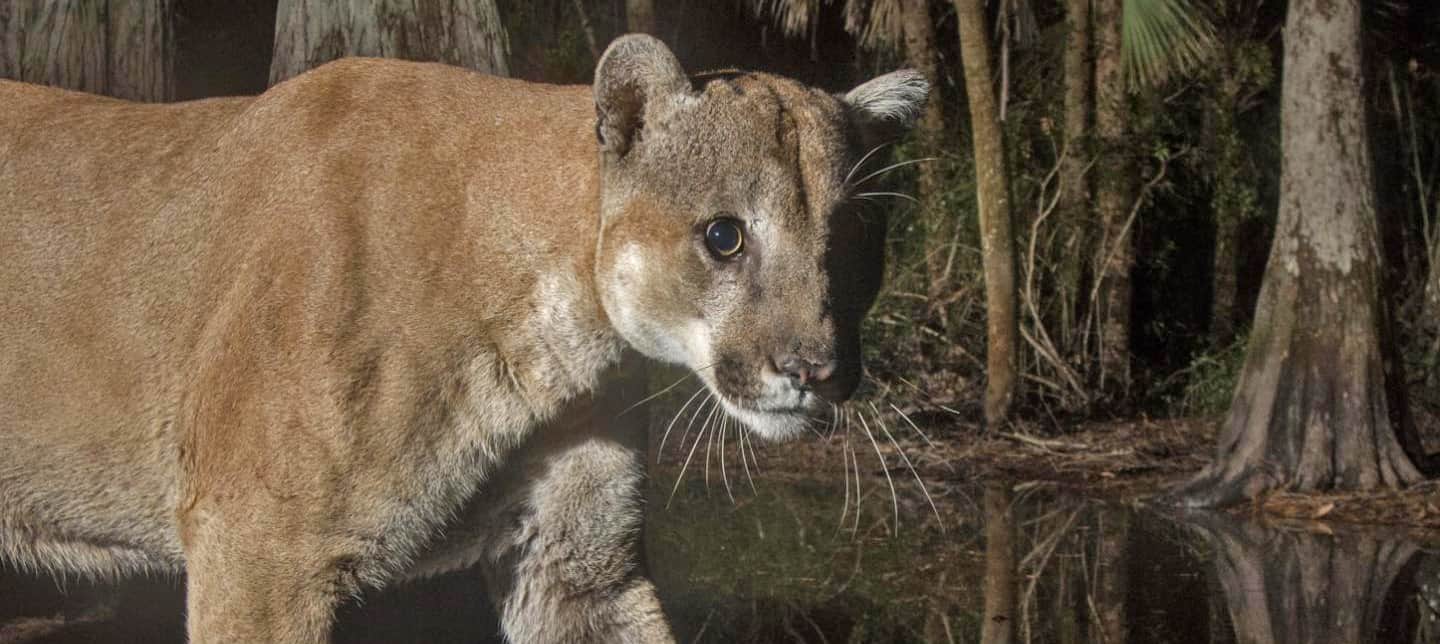Share this article
Florida panther genome reveals higher genetic diversity
Bringing in Texas pumas in the mid-’90s reduced Florida panther inbreeding and increased the panther’s genetic diversity threefold, researchers found after sequencing the panther’s genome.
The Florida panther (Puma concolor coryi) population had been so small — only about 20 to 30 individuals — a couple decades ago that inbreeding resulted in genetic defects including undescended testicles, heart defects and other diseases.
“In the mid-’90s, genetic data showed Texas pumas were very, very similar,” said Bob Fitak, an assistant professor in the University of Central Florida’s Department of Biology and a study co-author. “They released Texas individuals into Florida to increase genetic variation.”
This process, called, genetic rescue, is now used for endangered species across the planet, and with genomic sequencing, researchers “can now look at what the effects of genetic rescue were across the entire genome,” he said.
In the study published in G3: Genes, Genomes, Genetics, Alexander Ochoa, a postdoctoral research associate at The Ohio State University, led a team that collected blood samples from 10 individuals, including Florida panthers, Texas pumas (Puma concolor) and puma-panther offspring.
They found genetic variation tripled with the breeding of Florida and Texas pumas, with the population now up to between 120 and 230 individuals, with decreasing inbreeding defects. “It’s not a surprise that there was an increase,” Fitak said. “Initial genetic work in the 1990s suggested this would happen. But we also didn’t know the exact magnitude. It’s not a massive surprise, but at least we know what that value is now.”

Bob Fitak, an assistant professor at the University of Central Florida, is part of a team that helped sequence the Florida panther genome for the first time. ©Karen Norum, University of Central Florida, Office of Research
The team also found that panthers generally seemed to have lost some of their olfactory, or smell, receptors. But at the same time, they likely selected for increased ability of senses like vision.
The researchers hope to eventually determine which parts of the genome came from the Texas population and which came from the Florida panthers. “We want to try to find the exact genetic variants associated with those traits causing problems in the inbred population,” he said. “We can then see how the influx from the Texas population helped mitigate that.”
Fitak said this information could be helpful for other species going through genetic rescue as well.
“These effects happen in highly inbred species across the tree of life,” he said. “With Florida panthers, we want to see if our results can be extrapolated to other species.”
Header Image:
Scientists have pieced together the first complete picture of the Florida panther genome — work that could serve to protect that endangered population and other endangered species going forward.
Photo courtesy of Carlton Ward Jr.








